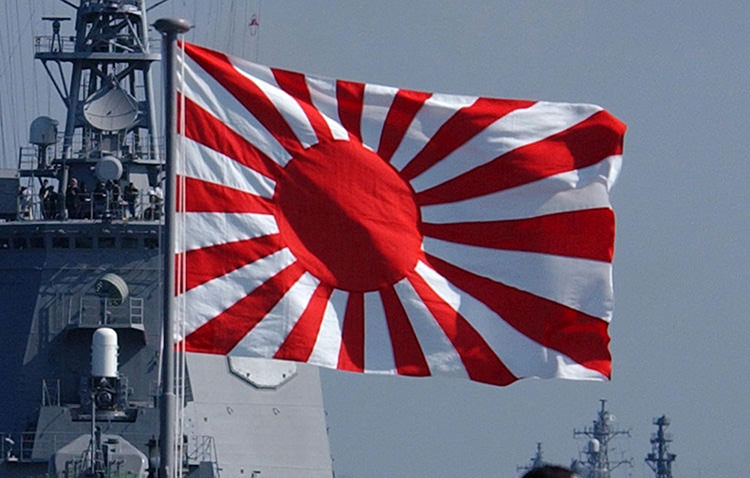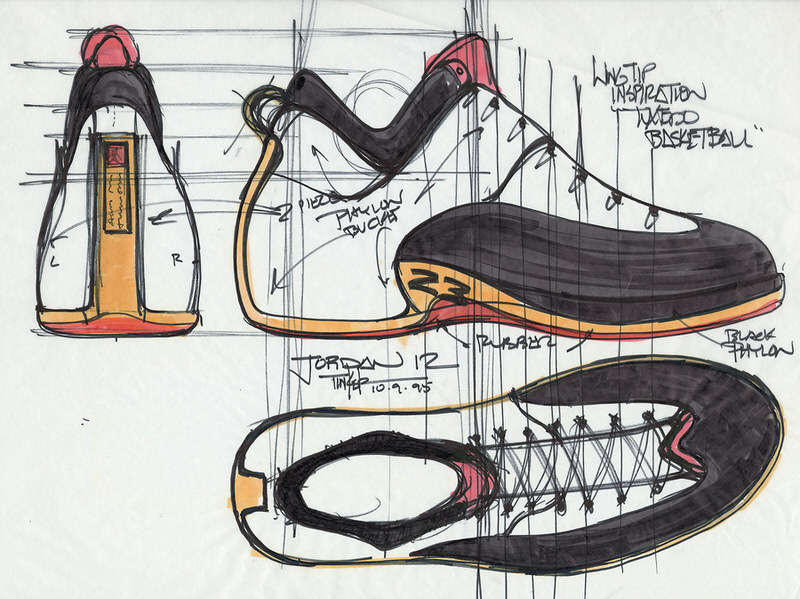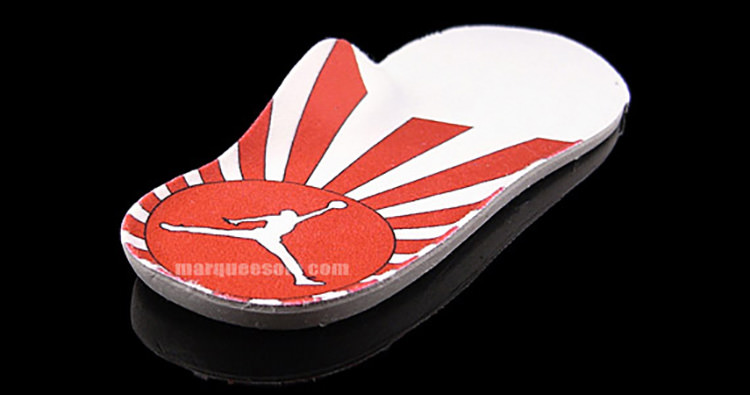This post may contain affiliate links. Please read our disclosure policy.
10 years ago today, the Air Jordan 12 Rising Sun retro released.
At least that was the original plan.
An homage to Japan’s Rising Sun flag and its inspiration on that of the AJ12’s pleated leather upper that explodes over the mudguard, this retro rendition — though in no ways made with ill intent — caused controversy out East long before Betsy Ross or the Rockets GM were modern talking points.

While technically speaking every Air Jordan 12 is inspired by the Rising Sun Flag in regards to design, the retro of its namesake ten years ago took said styling at face value by using the tone’s associated with the flag all over the model and putting the actual flag on its insole.
Longe before the days of modern outrage culture or worldly wokeness, the shoe caused controversy much like that of the Betsy Ross Flag Air Max 1s in 2019.

Why was that? To some, the Rising Sun flag represents the Japanese military, ultranationalism, their imperial era and connotations to Nazi Germany. Sneakerheads, members of academia and social activists petitioned Nike and Jordan Brand to take notice of the sensitivity which they ultimately did.
Moving swiftly, the release was pushed back and the Rising Sun insole was replaced with that of one without the flag graphic.

In the US, the shoe still sold well for fans of the Air Jordan 12 but never quite reached the acclaim of lauded new colorways like say the “Nubuck” or “Melo” 12s.
Its almost all-white upper and the proven longevity of the AJ12 made these a Kicks On Court staple, but typically speaking the quiet colorway didn’t move the masses.
In hindsight, placing a patent leather mudguard on an Air Jordan 12 was a relatively bold idea. Controversy aside, amplifying the design inspiration of the shoe to that of a color story was forward-thinking considering all the Tinker Sketch sneakers that have hit in the last few years.

Socially, it proves that sensitivity to symbolism is not merely a Twitter trend in 2019 among US millennials, it’s an issue that affects people worldwide and has for a while now. While brands are much better at doing their homework now, JB and Nike at least look favorable over time in regards to how quickly they reacted and adjusted both their product and their rollout.
Still, the Air Jordan 12 and its design ethos rooted in the Rising Sun flag hit a sore spot with many sensitive to that flag and what they feel it stands for. In 2016, Korean professor Seo Kyoung-duk wrote a letter to MJ, Tinker and Mark Parker expressing his concern over the shoes – in any colorway – representing that of the Rising Sun flag.

“An overwhelming number of consumers across the world are purchasing the sneakers, and many of them do not know the design resembles the Rising Sun flag,” Kyoung-duk said. “I would like to encourage the executives to avoid making the same mistakes in the future by helping them realize their insensitivity, indifference, and ignorance of historical facts.”
At the time, Nike discontinued sales of the Air Jordan 12 in Korea.
While the Air Jordan 12 “Rising Sun” will likely never release again with said nickname and certainly won’t ever release with the original insoles, its history does add credence to recent issues regarding the Betsy Ross Flag Air Max 1s and does bring up the debate in regards to affect versus intent in regards to design — especially when considering work created in the past.

On the ten year anniversary of its original release date, do you remember this Air Jordan 12 when it hit a decade ago today? Would you like to see JB do more material swaps on the AJ12 like they introduced with this pair? Should JB consider altering or shelving the Jordan 12 based on symbolism and sensitivity?
Let us know on social.




